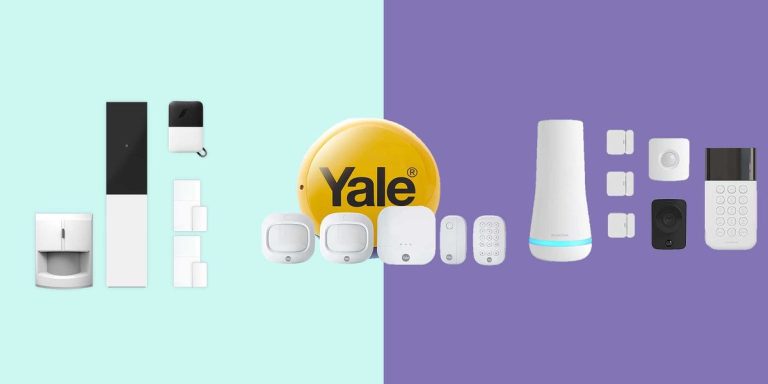What is a smart alarm?
A smart alarm is a wireless system that uses your home's Wi-Fi network to connect various components. Therefore, they are affordable and you may even be able to install them yourself. Similar to a typical alarm, if something triggers the sensor, it will make a loud sound.
The two most common types of sensors are open/close sensors and PIR (passive infrared).
Open/close sensors are for windows and doors. It consists of two parts that form a connection when the door or window is closed. If the connection is lost, i.e. if an intruder opens the door, the siren will sound.
PIR sensors use infrared light to detect movement. If you install these in the hallway or at the entrance to your house, the sensor will activate and when it detects movement, it will sound a siren.
Some smart alarms include or work well with Wi-Fi security cameras from the same manufacturer. These not only act as motion sensors, but also allow you to see what's going on in your home if your alarm goes off. This way you can tell if it's a false alarm or a real emergency.
Traditional burglar alarms are activated and deactivated via a control panel, usually located in the entrance hall. However, with a smart home security system, you control it through an app on your phone.
That means you can adjust settings on the go and even receive sensor-triggered alerts straight to your pocket. One thing to note is that smart alarms require a hub to connect the various components all without wires.
How much does a smart alarm system cost?
For between £200 and £300 you can get a home security system with a hub, some sensors and maybe even a camera. We have a separate list of the best Wi-Fi security cameras, and this roundup also includes some kits with cameras.
Window and door open/close sensors can cost between £20 and £30, while cameras can be purchased from around £100. Please note that they must all be of the same brand so that they are all connected and can be controlled with one app on your phone.
Are smart alarms useful?
Smart home security systems can be as effective as traditional burglar alarms, but an external siren in front of your home may not always act as a deterrent to intruders. Most models offer optional monitoring services to alert police, but they are not as comprehensive as those offered by traditional alarms. These alarms often notify authorities when an alarm is triggered but not confirmed as a false alarm.
Considerations when purchasing a smart alarm
sensor
Most smart alarm manufacturers offer a variety of sensors in their alarm bundles, so you'll need to find the combination you need for your facility.
camera
If you want to keep an eye on your home while you're away, it's worth looking for a combination of indoor and outdoor security cameras. This will allow you to see if someone is sneaking around in your garden or if your mischievous pet is misbehaving in the hallway, acting as an additional motion sensor.
keypad and fob
Some smart home security systems include keypads and fobs that make it easier to arm and disarm alarms than using an app. This is useful if you have dog walkers, cleaning staff, or other people who might come in and out of your home when you're not there.
siren
Most brands require you to include a loud siren to scare away intruders, but we've noted cases where this isn't included or is an optional addition. The maximum volume is also listed below. 85db is comparable to a kitchen blender and 100db is as loud as a motorcycle.
install
Most models we tested require you to set it up yourself using the included adhesive pads or screws. Be sure to place the camera or siren high enough on the wall (somewhere between 5 feet and 8 feet) to prevent your pet from exploding.
backup power supply
Some smart alarms include a backup battery that allows them to continue working during a power outage.
Compatibility with other devices
If you have other smart home devices, such as lights or plugs, it's worth looking for a compatible home security system. For example, you can set a smart light to turn on when a door opens, or a radio connected to a smart plug to start when a motion sensor detects movement. Some connect to voice assistants like Amazon's Alexa, Apple's Siri, and Google Assistant.
External monitoring service
Some smart alarms come with an optional subscription service that monitors your home's alarms and contacts emergency services if the alarm goes off and doesn't go off. Prices vary by company, so be sure to check.

